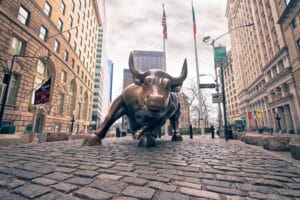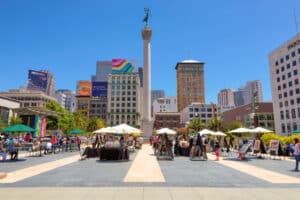You might not be able to buy happiness, but a plane ticket to New York is pretty close! It’s a dream destination for many, with 56.7 million tourists checking it off their bucket lists in 2022.
The city lives up to its nickname “the city that never sleeps” year after year. But in the hustle and bustle of this iconic metropolis, it’s important to be street-smart, like a local who knows exactly what bench, subway station, and alley to avoid.
In this article, we’ll help you get there by sharing all the New York safety details—common crimes, dangerous areas, police presence, environmental challenges, and more.
If the city truly never sleeps, one must learn how to safely maneuver its insomnia, right? Let’s begin.
Are you planning a last minute trip to New York? We’ve put together all the resources you’ll need for a fun & safe travel:
🛌 Best & Safest Places to Stay in New York:
👉 The Times Square EDITION – Daily housekeeping, City view, Balcony
👉 The Dominick Hotel – Fitness centre, Private parking, Airport shuttle (free)
👉 Gansevoort Meatpacking – Facilities for disabled guests, Free WiFi, Bar
👉 Equinox Hotel – 2 swimming pools, Spa and wellness centre, Bar
⛱️ Fun Activities & Tours in New York:
👉 Private Luxury Daytime Boat Tour in New York City – 2 Hour
👉 Washington DC and Monuments Day Tour from New York
👉 Bike Rentals in and around Central Park New York City
🚗 Best & Safest New York Transportation Services:
👉 Airport Pickup Service – Welcome Pickups
👉 Rent a Car – DiscoverCars
🙏 Stay Safe While Travelling:
👉 Safetywing (for medical insurance)
👉 VisitorsCoverage (for trip insurance)
Is New York Safe?

The Economist rates New York as one of the top 15 safest cities in the world. It’s also the fifth safest big city in the US.
So you can feel comfortable knowing that New York City is safe. But it’s also one of the biggest and wildest cities on the planet! While there’s crazy fashion, buildings that seem to touch the sky, a bustling nightlife scene, and funky street performers making Times Square their stage, tourists should be aware of:
- Travel advisory: Level-One warning, exercise normal precautions
- Crime rating: Medium, 49.94
- Common crimes: Drug consumption and dealing, petty and property crimes
- Most dangerous neighborhoods: East New York, Cypress Hills, Fordham, University Heights, Morris Heights, and Mount Hope
- Police presence: The New York Police Department (NYPD)
- Public transportation: Easy to navigate, be cautious around the 125th St. 4, 5, 6 platforms
- Taxi options: Yellow taxi, Green taxi, Uber, Lyft, and Via
- Medical care: Great but expensive, opt for travel insurance to cover any medical costs
- Solo travel: Safe, but use common sense and avoid bad neighborhoods
- Natural disasters: Possibility of hurricanes, tropical and winter storms, floods, earthquakes
- Carbon monoxide: There’s a possibility of CO poisoning, so bring a portable CO detector
Travel Advisory for the United States
The travel advisories of Canada, Australia, and the United Kingdom place the U.S. in the level-one travel category which comes with the lightest warning, and it’s for places with low crime levels and minimal safety concerns.
For tourists, it means exercising “normal precautions” in the Big Apple. Authorities point out that petty crimes such as pickpocketing and purse snatching do occur in urban centers and tourist hotspots, and violent crimes occur in poorer neighborhoods—but you shouldn’t be wandering off to the outskirts as a tourist anyway, so you’re all safe.
Now, the advisories also cover the threat of terrorism. NYC has unfortunately been the target of high-profile terrorist attacks in the past, notably the 9/11 attack on the World Trade Center. But as of 2023, the City Hall lowered the threat level to “low to moderate.”
A Comprehensive Look at New York Crime Rates
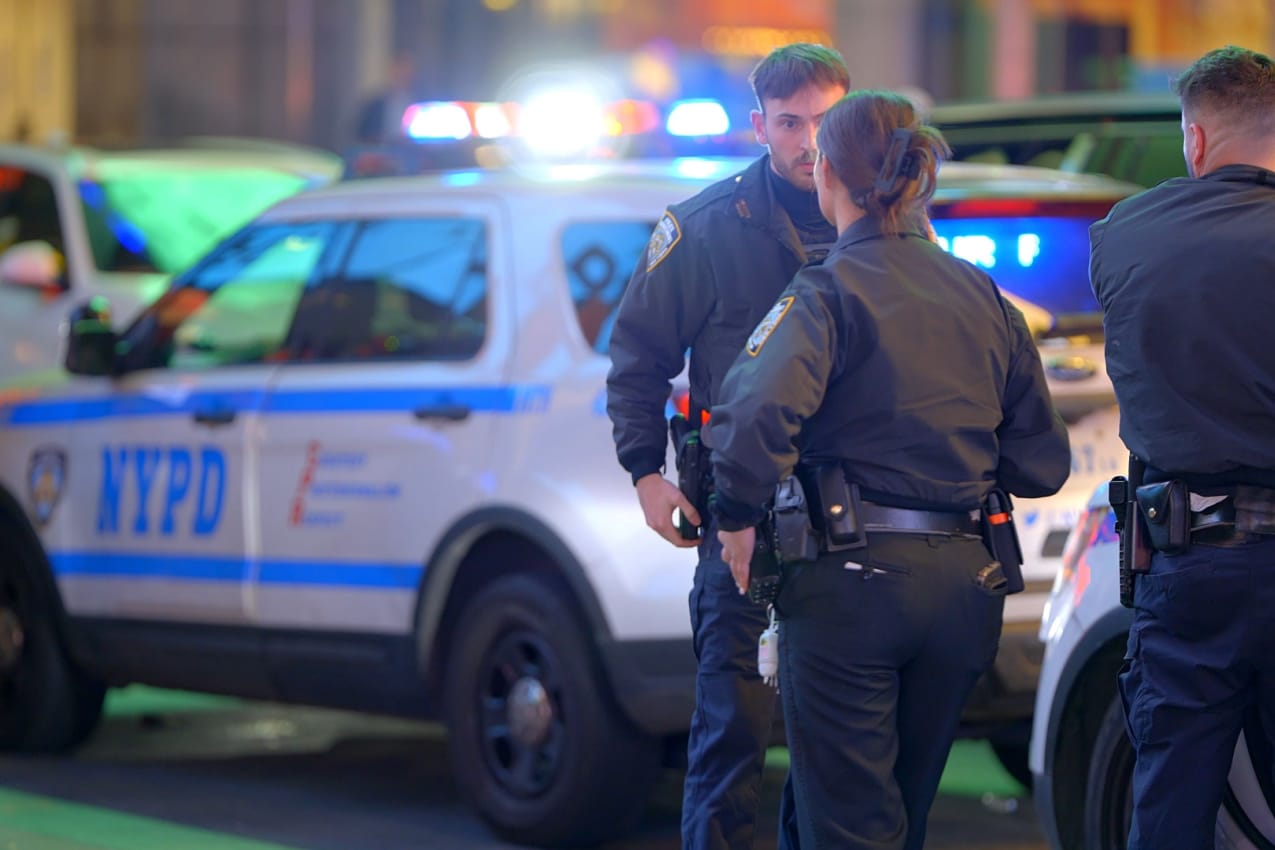
New York City has a medium crime rating of 49.94.
In 2022, the city experienced a total of 126,589 felonies—a significant decrease from the year 2000, when 184,652 felonies were reported.
Fast-forward to 2023, and New York has even lower crime rates in all the major felony categories compared to 2022, including:
- A 34.2% drop in arsenal incidents
- A 27.0% decrease in burglary
- A 12.5% decrease in crime inside the city’s transit system
- A 14% decrease in bias incidents
Homicides remain the least probable cause of someone losing their life in New York when compared to other factors like drug overdose, cancer, or diabetes.
| Safety Concerns | Crime Rate | Status |
| Overall Crime Level | 53.85 | Moderate |
| Increase in Crime (Past 3 Years) | 59.67 | Moderate |
| Home Break-Ins and Thefts | 41.05 | Moderate |
| Mugging and Robbery | 49.21 | Moderate |
| Car Theft | 39.95 | Low |
| Theft from Vehicles | 48.62 | Moderate |
| Personal Attacks | 48.66 | Moderate |
| Verbal Insults | 54.57 | Moderate |
| Racial, Ethnic, Gender, or Religious-Based Attacks | 39.71 | Low |
| Drug Use and Dealing | 60.03 | High |
| Property Crimes (Vandalism and Theft) | 57.19 | Moderate |
| Violent Crimes (Assault and Armed Robbery) | 52.99 | Moderate |
| Corruption and Bribery | 53.52 | Moderate |
| Safety Walking Alone in Daylight | 70.24 | High |
| Safety Walking Alone in Nighttime | 47.50 | Moderate |
Police Presence in New York
The New York City Police Department (NYPD) is the largest and one of the oldest municipal police departments in the United States, with approximately 36,000 police officers and 19,000 civilian employees.
Throughout your stay in New York City, you’ll likely encounter the ubiquitous NYPD cars and officers, present on the streets, at tourist attractions, in malls, in the subway, and in parks. New York City police officers are known for being friendly and helpful, – they can provide directions or address any safety concerns.
In case of an emergency, the universal emergency number is 911. Here are the police stations in New York City, should you need protection or wish to file a report.
Public Transportation Safety in New York
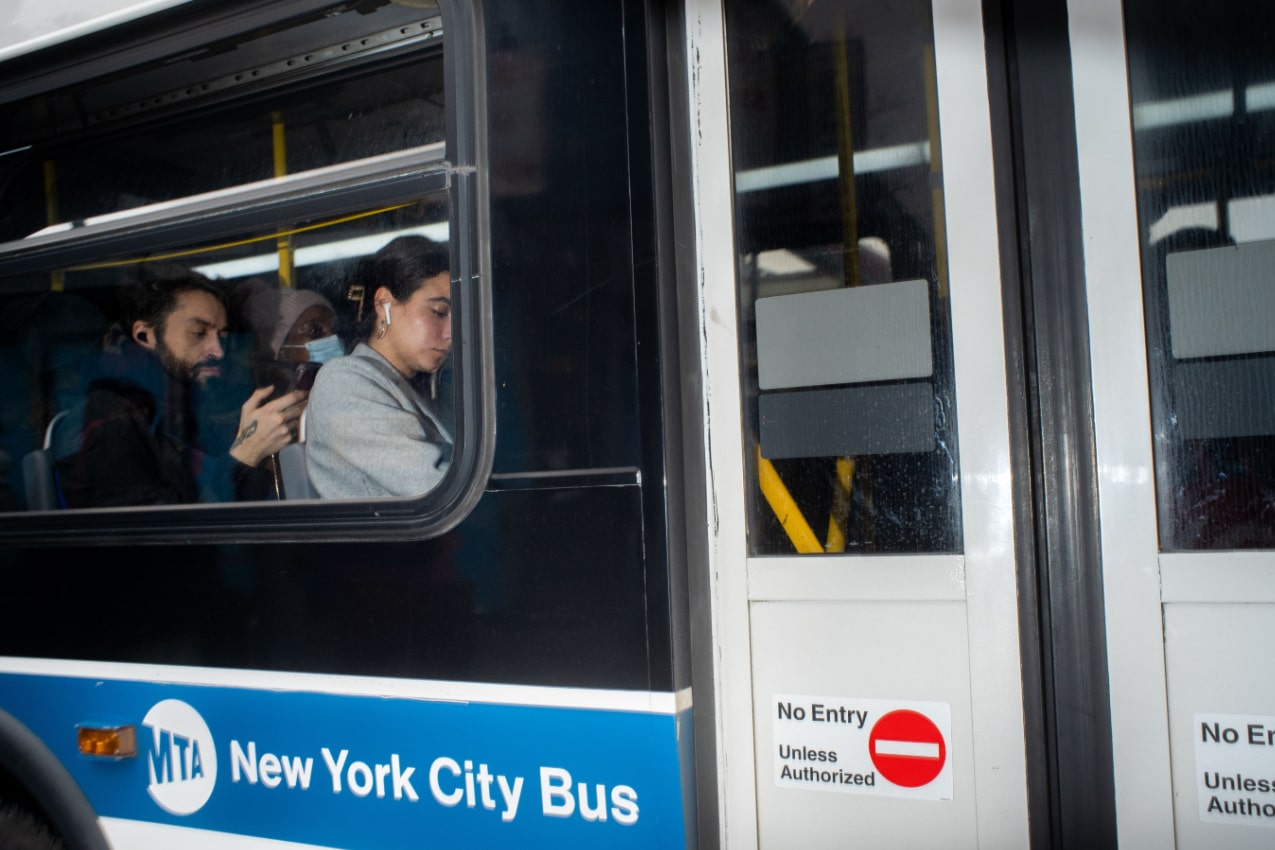
Renowned worldwide, the subway and bus networks are the beating heart of New York, with around 83% of New Yorkers effortlessly navigating their way around every day.
As the NYPD has confirmed, crime in the city’s transit system decreased by 12.5% from 2022, which is great news.
The riskiest areas of New York’s subway system are:
- The 125th St. 4, 5, and 6 platforms are known to have the most incidents of crime.
- Times Square-42nd St./Port Authority, Broadway Junction, Union Square, Stillwell Ave., and Jay St.-MetroTech are often sites of incidents during late-night hours.
- The Utica Ave.-Crown Heights platform on the Nos. 3 and 4 trains are the site of frequent crime during the day.
- The 86th St. R train station in Brooklyn experienced the most graffiti incidents.
The lowest incidents of crime happen on the stations serving the Nos. 2 and 3 trains, and another serving the Nos. 4 and 5 trains on Lexington Ave—located in the Financial District.
Consider these safety tips shared by New York locals:
- Subway stations have multiple entrances and exits. Opt for the busiest stairs when traveling alone, as they are generally the safest.
- Being around more people reduces the likelihood of becoming a victim. Consider riding in the first or middle cars, which tend to have more commuters.
- Keep the headphone volume low to stay aware of your surroundings. And of course, keep your belongings close to you.
- If out alone late at night, consider taking a taxi for added safety.
Medical Care Quality in New York
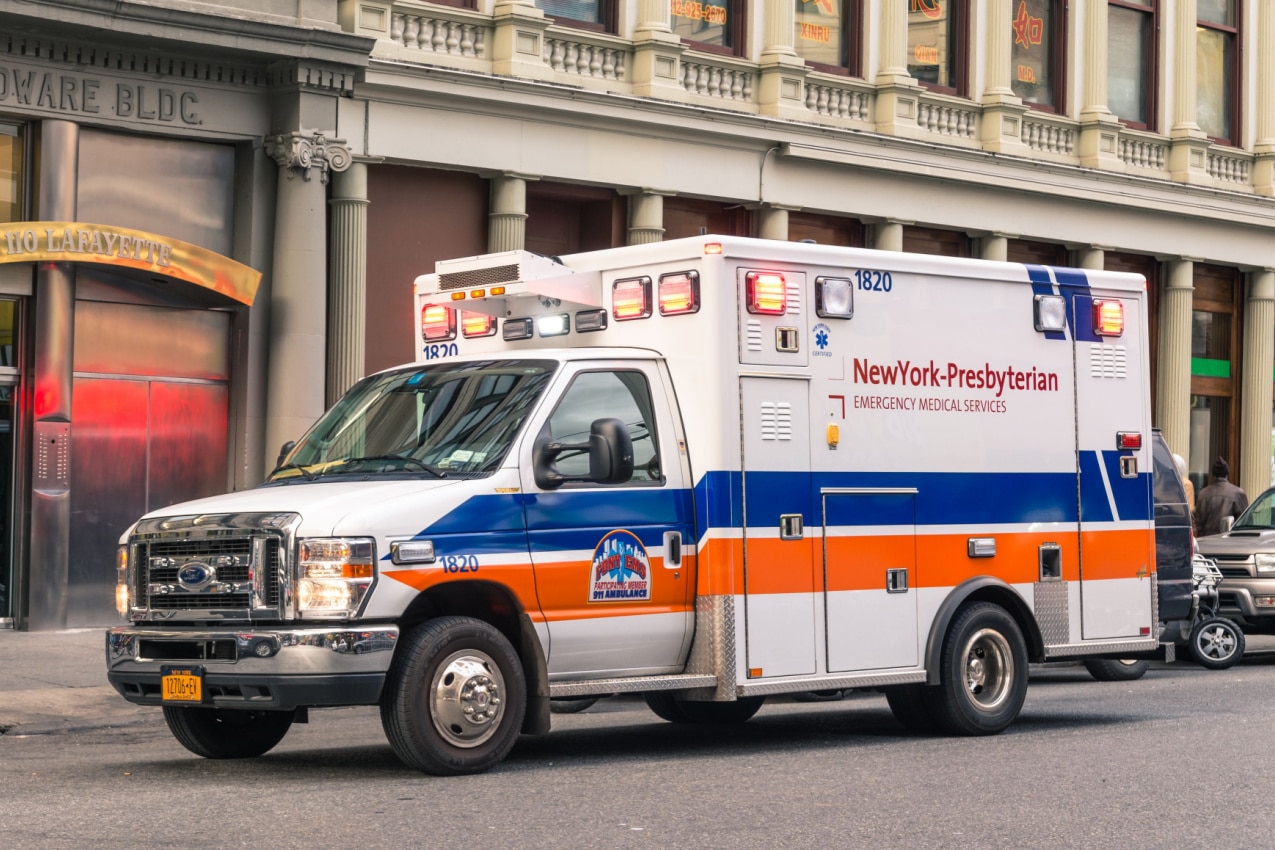
New York City boasts a multitude of medical facilities, both public and private. Public hospitals will be of great service if you require a basic check-up or for a non-emergency, while private hospitals are better for specialized care.
Among the top hospitals in the city are:
- Mount Sinai Hospital
- New York-Presbyterian Hospital-Columbia and Cornell
- North Shore University Hospital at Northwell Health
- NYU Langone Hospitals
- Lenox Hill Hospital at Northwell Health
- Hackensack Meridian Health
- Long Island Jewish Medical Center at Northwell Health
- Morristown Medical Center
- Montefiore Medical Center
- Mount Sinai Morningside and Mount Sinai West Hospitals
- New York-Presbyterian Brooklyn Methodist Hospital
- Huntington Hospital at Northwell Health
If you happen to face a health problem during your New York vacation, be aware that European health cards or insurance from your home country will not be valid in the United States. Without insurance, even routine medical care, like a prescription, can tally up to hundreds of dollars.
Here are some insurance options recommended by Forbes:
In case of a medical emergency, dial 911 for immediate assistance and transport to the nearest hospital by Emergency Medical Services (EMS).
Is It Safe to Travel Solo in New York?
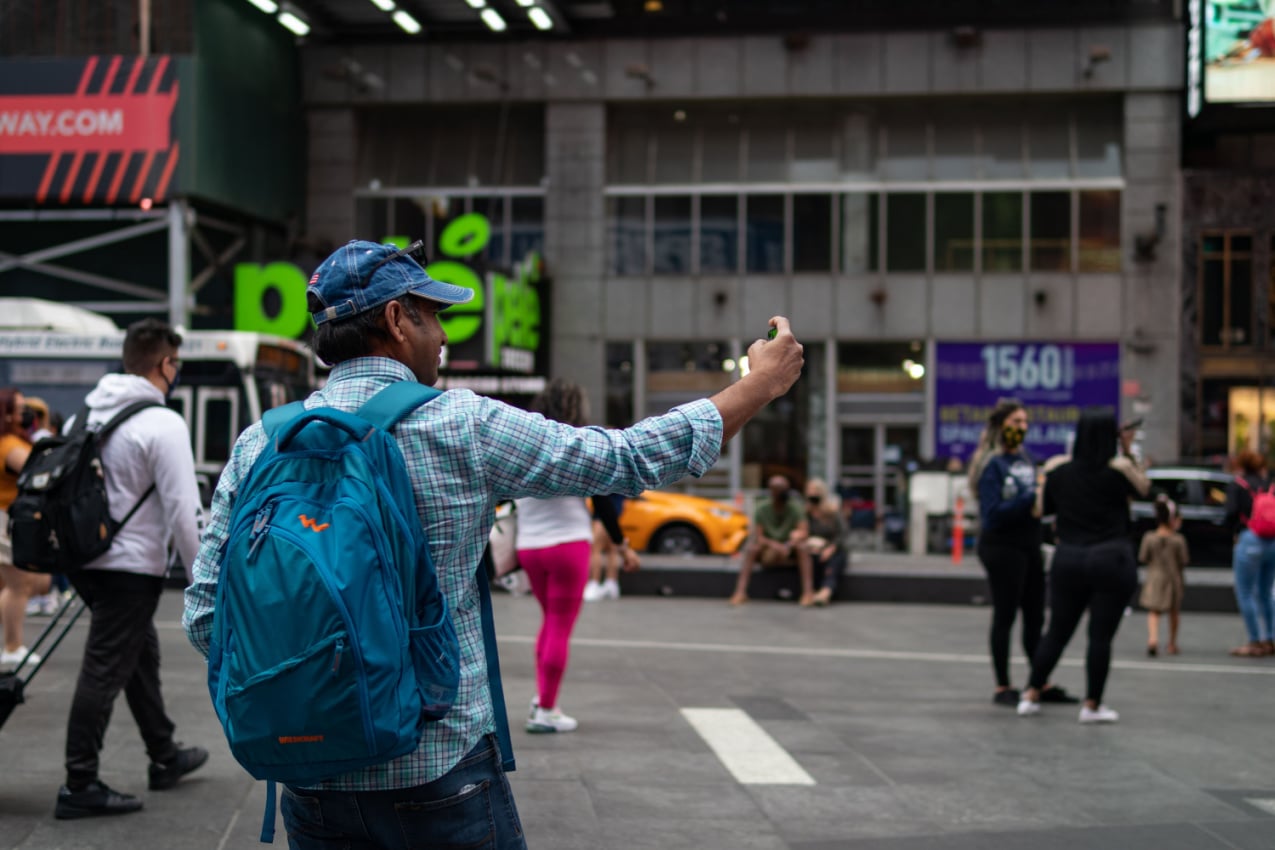
Yes, it is. Solo exploration is a common sight in the hustle and bustle of New York City, with countless locals and tourists navigating the city or riding the subway solo.
Many solo tourists have nothing but good words to say about traveling to New York City. However, a small portion of them may fall victim to crime in the wrong place at the wrong time—as we’ve seen in the media reports.
So, we can’t stress enough that being street-smart in a huge metropolis like New York is absolutely crucial to a safe solo traveling experience. Opting for a hotel in a safe area of New York will minimize the chances of stumbling into a dangerous situation. Hostels offer an additional perk—meeting fellow solo travelers for shared adventures.
The last golden rule for solo travelers is to avoid venturing around the city alone at night. Use your common sense, trust your instincts, and you’ll be alright.
Perils of Nature: The Risk of Natural Disasters in New York
Hurricanes & Tropical Storms
New York is mostly impacted by remnants of hurricanes or tropical storms—so a direct landfall from a hurricane isn’t something you should worry about.
Superstorm Sandy was the last hurricane to affect New York. The hurricane hit the city on October 29, 2012, and led to extensive flooding in Lower Manhattan and coastal areas of New York City, with storm surges affecting the subway system and other infrastructure.
Follow the latest weather and hurricane reports in New York. The Atlantic hurricane season is from June 1 to November 30, so this is the time to keep a watchful eye. If you find yourself in the city during a storm or hurricane, be aware that outdoor activities may be temporarily on hold!
Winter Storms
Winter storms in New York can happen between late October and April, bringing snow, freezing temperatures, rain, and strong winds. In New York, it may affect transportation and cause flight delays as well as slippery roads.
On the bright side, the snow can turn New York into a beautiful winter wonderland. So enjoy activities like building snowmen in Central Park and sipping hot cocoa in cozy cafes. Just make sure to dress warmly!
Floods
Flooding in New York occurs after hurricanes or tropical storms. If parts of New York are flooded, be aware that certain subway lines may be temporarily closed and buses may have delays. Also, some venues that are affected by the flood may also be temporarily closed.
For you, it’s important to follow the authorities’ instructions regarding the floods. Don’t drive in flooded areas and reserve your outdoor activities until the situation becomes better!
Earthquakes
New York isn’t known for frequent or strong earthquakes—which is great news! The seismic risk is low, and if one occurs, buildings are designed to withstand it. New constructions and older buildings follow strict building codes. Stay updated on earthquake info and remember to “Drop, Cover, and Hold On:”
- Drop to the ground to prevent being knocked over by the shaking
- Take cover under a sturdy piece of furniture, such as a table or a desk
- Hold onto your shelter/safety position until the shaking stops
Beware the Silent Threat: Carbon Monoxide Poisoning in New York
According to a 2016 survey, New York had a total of 4,399 carbon monoxide (CO) leaks, with the highest concentration in Brooklyn (1,812) and fewer cases on Staten Island (263).
Authorities are strongly urging homeowners, hotels, churches, and all places where CO might leak to install CO detectors. However, incidents still occur. In 2023, a building in the Bronx had a CO exposure due to faulty water heaters. Thankfully, the victims only experienced mild symptoms of CO poisoning, and no fatalities occurred.
Carbon monoxide leaks can happen anywhere, not just in New York. For instance, one incident happened at an Airbnb in Mexico City, and another one at a concert in Barcelona.
That is why it’s important to carry a portable CO detector during your travels. Place it in your hotel room, and it’ll alert you to any potential gas leaks in the air you’re breathing. Even if the hotel room already has a CO detector, having a backup adds an extra layer of safety.
If your carbon monoxide detector goes off, open your windows, leave the room, get to fresh air immediately, and call 911.
New York Weather Patterns: What to Expect
In New York City, the summers are warm and humid, while the winters are very cold, snowy, and windy.
The warm season lasts from June to mid-September, with an average daily high of 76°F. July is the hottest month, reaching up to 84°F.
The cold season spans from December to mid-March, with temperatures dipping below 48°F. January is the coldest month, reaching as low as 29°F.
Cloudy season in New York starts in mid-November and lasts up until June. The cloudiest month is January, however, it’s also the time when New York experiences the least rain, so that’s a plus.
The month with the most rain in New York City is April, with an average rainfall of 3.7 inches (93.98mm). The month with the most snow is February, with an average snowfall of 6.1 inches (154.94mm). The snowiest month is also the windiest, with an average wind speed of 10.2mph (16.4kph)—so make sure you pack very warm clothing.
Monthly Average Temperatures in New York
| Month | Fahrenheit (°F) | Celsius (°C) |
| January | 33 | 0.5 |
| February | 35 | 1.6 |
| March | 42 | 5.5 |
| April | 53 | 11.6 |
| May | 63 | 17.2 |
| June | 72 | 22.2 |
| July | 77 | 25 |
| August | 76 | 24.4 |
| September | 69 | 20.5 |
| October | 58 | 14.4 |
| November | 48 | 8.8 |
| December | 39 | 3.8 |
When Is the Best Time to Visit New York?
The sweet spot for visiting New York is from April to June and September to early November. These are the months when the weather is just right, the crowds are a bit more manageable, and you might grab a sweet deal on accommodation. However, summer and winter can also offer unique experiences!
Here’s the scoop:
- Best weather: September and May consistently provide pleasant and comfortable conditions, avoiding the summer humidity and winter chill.
- Best deals: Early January and February, post-holiday season and amid winter’s cold, offer the most budget-friendly options.
- Low crowds: Winter, marked by freezing temperatures, sees minimal tourist crowds compared to the bustling summer months.
- Best time for family travel: The Christmas season brings a spectacular atmosphere for family experiences, but be sure to pack warm clothes for the chilly weather.
How to Stay Safe in New York
- Don’t park your car in undesignated parking spots as you may get robbed. Instead, the ParkMe app can help you find, reserve, and pay for a parking spot near you ahead of time.
- Don’t leave your bicycle in random spots because someone may steal it. Citi Bike is a great app for pinpointing the nearest docking stations.
- If you explore New York City by boat, download the NYC ferry app so you’ll be up-to-date on the latest schedule.
- Plan your adventures ahead of time so you don’t look like an outsider lost in a big city. iTourMobile is a great GPS map that follows your whereabouts and suggests places that may be of interest — like a famous museum, renowned pizza place, etc.
- Buying tickets in advance saves you from the lengthy lines at ticket stands. You can use the TKTS app and purchase tickets for both on and off-Broadway shows.
- If you’re a gourmand, Yelp is a great app that offers a breakdown of all the food establishments in New York. You can check out the menus, find their location, and read customer reviews.
- The vastness of Central Park might be confusing so try not to get lost. Download the Central Park NYC map to better navigate it.
- If you want to hail a cab, make sure the light on the taxi’s roof is lit. This indicates that the cab is available. If the light isn’t on, the cab is occupied.
- Keep a distance from the border of the subway platform when trains are arriving or leaving the station and don’t sit in the empty wagons of the train.
- Wearing gold chains or excessive jewelry, even if they are fake, can bring attention to you. Maintain a low profile to prevent getting robbed.
- Criminals use distraction techniques to steal from you. For example, someone may claim to be hurt at the exit door of a bus or on the street just to lure somebody into helping him/her, and afterward flee with their wallet or purse.
- Individuals offering to sell fake CDs is a regular fraud in places like Times Square. Politely pass these people as they’ll harass you into paying them if you show a slight interest.
- On the streets of New York, you’ll see people betting on various guessing games, such as cards or shells. Do not invest in these since they are all designed to trick you and steal your money.
- For the latest news in New York and around the globe, visit The New York Post and The New York Times.
Emergency Numbers
- Emergency: 911
- Non-Emergency (to report problems or ask questions about your community): 311
FAQ
If you’re a first-time visitor and want to soak in as much as you can in a short time, tourist cards are your best bet. These cards spare you from spending time waiting in line to buy tickets, offer you up to 70% discount, and give you the freedom to choose the New York City attractions that truly interest you.
These cards serve as a pass to major sites, bars, stores, restaurants, boat adventures, bike rentals, and more. Here are your options:
New York Sightseeing Pass
New York Explorer Pass
New York Pass
New York CityPASS
You can reserve your tourist card before you travel, or you can grab one when you arrive in New York. Even if you’ve picked certain attractions in advance, you can switch them up for others during your stay.
Central Park is nested in one of the safest parts of New York — between the Upper West Side and the Upper East Side of Manhattan.
Taking a stroll during the day is safe, whether you do it alone or with company. However, between 1:00 am and 6:00 am, Central Park is off-limits to the public. While you technically have until 1:00 am to explore, we’d suggest wrapping up your visit before dark, around 8 pm. And steer clear of densely wooded spots at night, like The Ramble and North Woods, as you may easily get lost.
You can purchase subway tickets in New York through the automatic machines available in nearly every station. You can use cash, debit, or credit to purchase:
A Pay-Per-Ride MetroCard
A 7-Day or 30-Day Unlimited MetroCard
A 7-Day Express Bus Plus MetroCard
The Metropolitan Transportation Authority (MTA) has all the maps for bus and subway routes — so feel free to check it out for better navigation — or use Google Maps.
Yes, technically there are. These tours let you explore the best places with expert guides. However, while you’re not required to pay anything, it’s a common courtesy to chip in based on how much you liked the tour. After all, those expert guides spent their day showing you around, so a little appreciation goes a long way!
Here are some free walking tours to consider:
Free Walking Tour of New York (Wall Street, National 9/11 Memorial & Museum, and more)
Free Walking Tour Manhattan Financial District (Ground Zero memorial, Wall Street Bull, etc.)
GuruWalk West Village (Washington Square Park, New York University, Chelsea Market, Friends’ apartment, and Carrie Bradshaw Apartment from Sex and the City).
New York Contrasts Neighbourhood Tour (West and North Side of Manhattan, Harlem, Bronx, Queens, and Brooklyn)
The tap water in New York City is safe to drink — it meets all federal and state safety standards. Sometimes, you might notice that the water tastes or smells a bit like chlorine, but the amounts of chlorine used to keep that water supply pristine are completely safe and not harmful to your health. If the taste of chlorine isn’t something you can get used to, purchase bottled water!
Yes, and much safer than the subway, especially if you are trying to reach your hotel in the late hours of the night. New York City is booming with all kinds of taxi options.
You’ve got the iconic Yellow Cabs — the official rides of NYC, usually cruising around Manhattan. Then, there are the Green Cabs, mostly found in the Bronx, Brooklyn, Staten Island, and Queens.
Another option is using a ridesharing vehicle such as Uber, Lyft, and Via. You can download their app on your smartphone, enter your destination, and the app will tell you if there’s an available vehicle nearby to pick you up.
Beware of the “Gypsy Cabs.” They’re unlicensed taxis that roam around the city, especially at airports. The drivers often sweet-talk tourists into a low-price ride. They can be any color, have the appearance of a limousine, and lack the official NYC taxi medallion, also known as a CPNC (Certificate of Public Necessity and Convenience). If you see one, politely decline their services.
Bidding Adieu to New York
Rest assured that New York is a fantastic destination with a strong safety record. The city, deemed one of the world’s safest, offers a vibrant experience for tourists.
While crime rates have seen significant drops, it’s wise to stay street-smart and be aware of your surroundings, especially in certain neighborhoods, public transport, and at night.
Enjoy the iconic sights, diverse culture, and unique experiences—just keep a keen eye out, stay savvy, and savor the magic of New York City!
